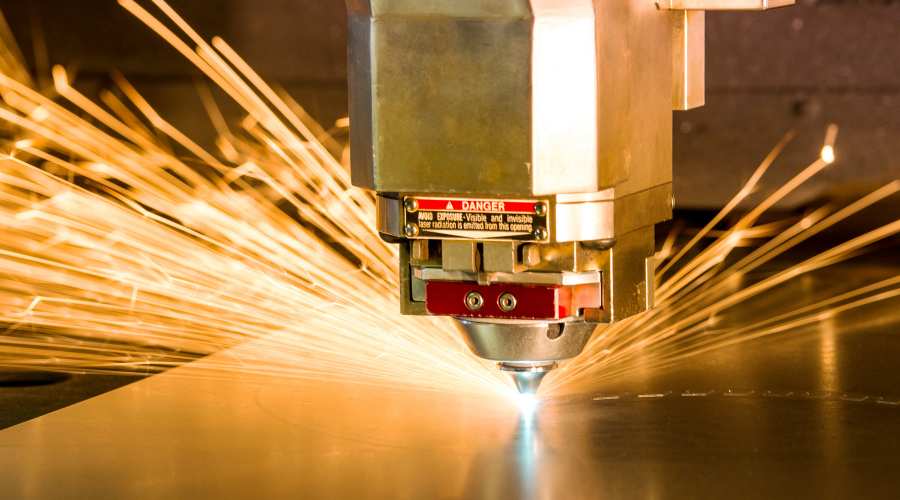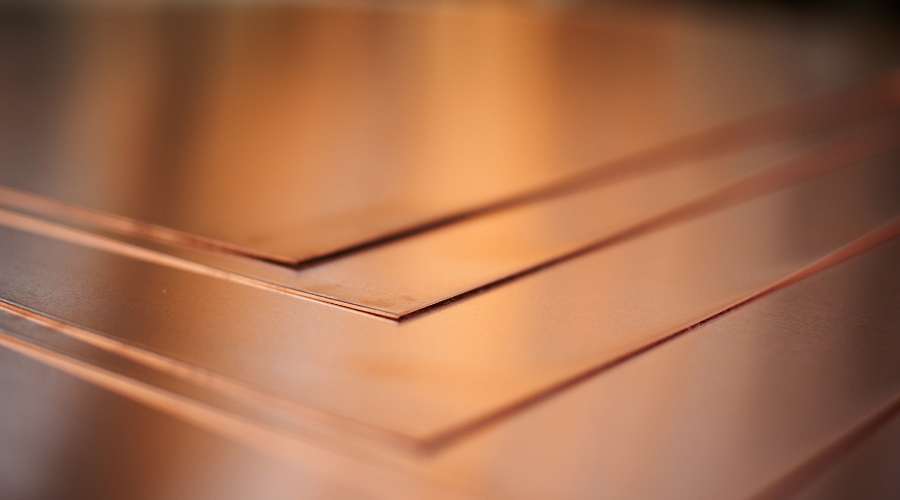Yes, it is possible to cut copper with a fiber laser cutter, but it can present some challenges due to copper’s high reflectivity and heat conductivity.
The edge quality may not be as good as with other cutting methods, and it may be slower. But there are several tips you can follow to make the process more precise and efficient.
In this article, I’ll cover the challenges of using a fiber laser cutter with copper, along with tips on improving the process and outcome and alternative cutting methods to consider.
Copper as a Cutting Material: The Challenges

Copper is a widely used metal that is known for its excellent conductivity, corrosion resistance, and durability.
It’s also a beautiful and sustainable material for makers who want to create anything from decorative home and fashion accessories to hardware, signs, and components for electrical and industrial applications.
However, when it comes to cutting copper with a fiber laser cutter, it can present some challenges.
Copper is a highly reflective material, meaning that it reflects a significant amount of the laser energy back toward the laser source. This can make it difficult to achieve a precise cut and can also damage the fiber laser cutter.
Copper is also a good conductor of heat, which means that it absorbs a significant amount of heat during the cutting process. This can cause the material to warp or melt, resulting in a poor-quality cut.
Additionally, cutting copper can release harmful fumes and dust, which can be dangerous for the operator and may require additional ventilation or filtration equipment to ensure a safe working environment.
Another important factor to consider when cutting copper with a fiber laser cutter is the thickness of the copper. Thin sheets of copper can be cut with a fiber laser cutter, but thicker sheets may be more challenging. The edge quality might not be as good as with other cutting methods and the speed of cutting may be slower.
It’s important to note that copper alloys, such as brass and bronze, are less reflective than pure copper, and can be cut more efficiently with a fiber laser cutter.
However, it’s always recommended to test the specific material and settings before committing to a production run.
Tips for Using a Fiber Laser Cutter with Copper

Despite the challenges of working with copper, fiber laser cutters still have several advantages over other types of cutting methods.
They can produce a high-quality, precise cut with the minimal heat-affected zone (HAZ) and minimal material distortion. They are also relatively fast and can cut intricate designs through a wide range of materials, including many different metals and even plastic and wood.
If this is your tool of choice, keep these tips in mind when using a fiber laser cutter on a reflective material such as copper:
- Test with thin sheets of copper first. Thicker sheets will be harder to work with and produce smooth cuts. Start with thin sheets, using the following tips, and experiment with the level of thickness before quality and efficiency are noticeably reduced.
- Reduce the cutting speed and increase the power to achieve a better cutting quality. This also works better when engraving versus trying to cut the material.
- Along with increasing power output, to reduce the reflectivity of the copper, it is recommended to use a high-pressure assist gas, such as nitrogen or argon (both are best for edge quality), during the cutting process. For more challenging cutting, use oxygen, but keep in mind this is reactive and will have lower edge quality.
- Use a specialized cutting head with a smaller focusing lens to reduce the width of the laser beam and improve the precision of the cut.
- Use appropriate ventilation and filtration equipment to keep your work area safe from harmful fumes and dust produced when working with copper.
Alternative Cutting Methods
If using a fiber laser cutter presents too many challenges, there are several machines that can be used to cut copper, depending on the thickness and quality of the copper, as well as the desired end result.
Some options include:
Waterjet cutter: Waterjet cutters use high-pressure streams of water to cut through metal, and can produce precise, clean cuts on copper. They are particularly useful for cutting thicker sheets of copper or for cutting intricate shapes.
Plasma cutter: Plasma cutters use a high-velocity stream of ionized gas to cut through metal and can produce precise, clean cuts on copper. They are particularly useful for cutting thicker copper sheets or intricate shapes.
→ Learn about how CNC plasma cutter and waterjet systems compare.
CNC router: CNC routers use a spinning cutting tool to cut through metal, and can produce precise, clean cuts on copper. They are particularly useful for cutting intricate shapes or for creating detailed engravings on copper.
Mechanical shears: Mechanical shears use a cutting blade to cut through metal, and can produce precise, clean cuts on copper. They are particularly useful for cutting thicker copper sheets and straight lines.
Oxy-Fuel cutter: Oxy-fuel cutter uses a flame to heat the metal to its ignition point and then a stream of Oxygen is used to cut the metal. They may be better with thicker copper sheets and can still produce a good edge quality.
The choice of machine will depend on the specific needs of your project, including the thickness and quality of the copper, the desired end result, and the budget available.
Conclusion
To recap, using a fiber laser cutter to cut or engrave copper presents some challenges, but with the right copper thickness, power output, and settings to counter the reflectivity of the material, you may still achieve some good results.

